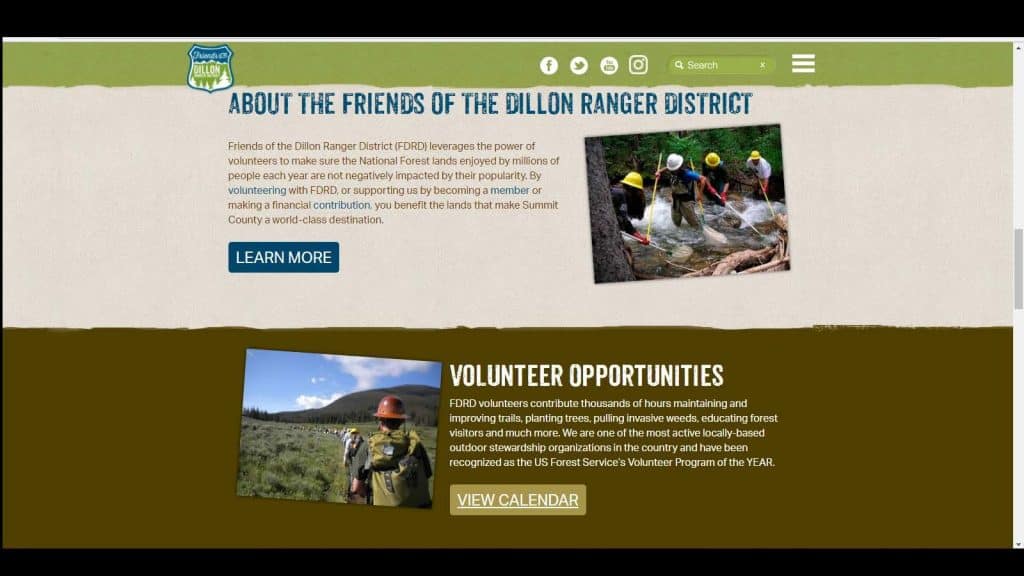In case your inbox hasn’t been flooded with requests for donations, it is that time of the year that we all think about giving back. Certainly this blog would appreciate any contributions (!) but that’s not what this post is about.
I’ve been looking at the gap between what the Forest Service needs to do in terms of recreation, and what it is funded to do. There are two very important ways to contribute- time and treasure. We’ll talk about time in the next post (volunteering).
Financial help to the Forests, as well as education, volunteering and other helpful actions can be part of a Friends group. Today I’ll highlight three of these.
First, Friends of Dillon Ranger District. They have a terrific website and range of activities, and even coordinate with the seasonal Colorado Gives. Scroll down on their main weblink to see all the things they’re doing. Here’s their mission:
Friends of the Dillon Ranger District (FDRD) leverages the power of volunteers to make sure the National Forest lands enjoyed by millions of people each year are not negatively impacted by their popularity. By volunteering with FDRD, or supporting us by becoming a member or making a financial contribution, you benefit the lands that make Summit County a world-class destination.
Second, the San Juan Mountains Association. People can have strong opinions about combining the BLM and the Forest Service, but these folks are working so that it’s seamless to visitors who want to experience the Forest/BLM without getting bogged down with two sets of maps, rules, etc.
The San Juan Mountains Association is a grassroots organization whose members share values and passion for our public lands and cultural treasures. We are based in Durango, Colorado and are the non-profit support partner for the San Juan National Forest and BLM Tres Rios Field Office.
How do these groups keep a positive attitude and away from divisive issues when, as we know, there are always at least a few circulating?
Here are the SJMA values:
In pursuit of our mission, the Board, Staff and Volunteers of SJMA commit to embracing these organizational values:
- Promote a Strong Land Ethic: We instill in people an appreciation for the integrity of the land and how their actions impact the ecosystem.>
- Connect People to the Land: We provide opportunities for personal experience and enjoyment in our natural surroundings.
- Respect People and Ideas: We support responsible behavior, and by being fair-minded, we seek a balance among differing land-use interests.
- Care for Heritage Resources: We foster protection of the region’s irreplaceable cultural treasures.
- Inspire Enthusiasm and Commitment in Our Supporters: We build passion for SJMA’s goals and ideals through positive interaction with the public.
- Educate through Involvement: We teach volunteers and other supporters through hands-on participation.
Does the Forest or District near you have a Friends group? Please considering donating to them, or if your Forest doesn’t have one, please consider helping establish one. For today, though, consider donating to the National Forest Foundation.
Also, I’m curious about how many Friends groups there are and where, so if you have one on your Forest or District please post the link in the comments below and tell us what you like (or don’t like) about them.





